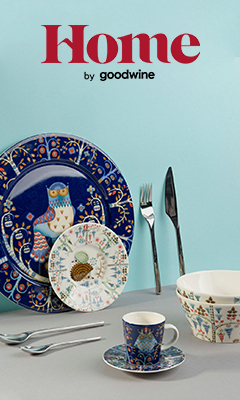Do we share 70% of our DNA with bananas?

How much of my DNA is banana
We share 40% of our protein making genes with humans. – Well, protein genes only account for about 1% of a humans DNA. The remaining 99% is a critical difference. So humans are not bananas.
Do we share DNA with trees
We also share a shocking amount of DNA with plants and insects. Plants and Insects We share around 60% of our DNA with bananas, 50% of our DNA with trees, 70% of with slugs (gross), 44% with honey bees, and even 25% with daffodils.
How much DNA do we share with dogs
Humans and dogs share 84 percent of their DNA, which again, makes them useful animals to study human disease processes.
How much DNA do we share with apples
about 40%
As a result humans share about 40% of our DNA with apples. As a side note the DNA of all humans is about 98.5% identical with that 1.5% difference making up all the different variations we see in people.
What is 1% of our DNA
Only about 1 percent of DNA is made up of protein-coding genes; the other 99 percent is noncoding. Noncoding DNA does not provide instructions for making proteins. Scientists once thought noncoding DNA was “junk,” with no known purpose.
How far back is 1% of my DNA
seven generations back
At seven generations back, less than 1% of your DNA is likely to have come from any given ancestor.
Do we share DNA with lettuce
We know the genetic difference between sexes is around one in 20,000. We know chimps and bonobos share 99% of our genes. More startling is an even newer discovery: we share 99% of our DNA with lettuce.
How much DNA do we share with pigs
How much DNA do we share with pigs We've all heard the expression “pigging out.” Interestingly enough, human beings also share a huge amount of genetic material with pigs. Almost as much as we do with chimpanzees! The genetic DNA similarity between pigs and human beings is 98%.
Can you share 100% DNA
Identical twins are the only siblings that share 100% of their DNA. Non-identical brothers and sisters share about 50% of inherited gene variants, which is why siblings and fraternal twins can be so different.
Is it possible to share 100% DNA
Identical twins are the only siblings who share 100 percent of their DNA. This is because identical twins are born when one zygote (formed by a sperm and egg cell) splits into two foetuses. This is quite a rare situation that only occurs in around three or four births per thousand.
How long ago is 1% DNA
At seven generations back, less than 1% of your DNA is likely to have come from any given ancestor.
Is 3% of DNA alot
You share around 50% of your DNA with your parents and children, 25% with your grandparents and grandchildren, and 12.5% with your cousins, uncles, aunts, nephews, and nieces. A match of 3% or more can be helpful for your genealogical research — but sometimes even less.
What is 1% DNA ethnicity
Well, a 1% match indicates that 100% ancestry was likely 6 – 8 generations back. This means they could be as close as your great-great-great-great grandparent. What is this If the connection were as close as this some people may already know or suspect that they had Native ancestors.
How far back is 0.5 percent DNA
The percent of African ancestry is relatively low with the majority of individuals having just 0.5 percent to 0.75 percent – which suggests that those people have an African ancestor who lived about six generations, or about 200 years, ago.
Do we share DNA with grapes
Humans share DNA with thousands of living things, from bananas to worms to yeast. This is because all plants, animals and fungi evolved from a common ancestor more than 1.5 billion years ago. So, humans share 24% of their genes with grapes, 24% with rice, 38% with roundworms and 44% with honey bees.
Do we share DNA with strawberries
Every living thing has DNA — or deoxyribonucleic acid – which is a blueprint of what makes you a human, your dog an animal or your roses a type of flower. You may be surprised to learn that 60 percent of the DNA present in strawberries is also present in humans.
Are pigs 80% blood
In pigs, for example, blood makes up around 3.3% of live weight, which generally yields about 2.5L per animal.
Can you share 75% DNA with someone
One of the most interesting aspects of the data above is that a person will share 75% X-DNA, on average, with their maternal aunt. This might seem too high, since many close relatives only share 50%, on average. But the 75% value is correct.
Who shares 50% DNA
Full Sibling
Average Percent DNA Shared Between Relatives
| Relationship | Average % DNA Shared |
|---|---|
| Parent / Child | 50% (but 47.5% for father-son relationships) |
| Full Sibling | 50% |
| Grandparent / Grandchild Aunt / Uncle Niece / Nephew Half Sibling | 25% |
| 1st Cousin Great-grandparent Great-grandchild Great-Uncle / Aunt Great Nephew / Niece | 12.5% |
Who would I share 12% DNA with
Average Percent DNA Shared Between Relatives
| Relationship | Average % DNA Shared | Range |
|---|---|---|
| 1st Cousin Great-grandparent Great-grandchild Great-Uncle / Aunt Great Nephew / Niece | 12.5% | 4% – 23% |
| 1st Cousin once removed Half first cousin | 6.25% | 2% – 11.5% |
| 2nd Cousin | 3.13% | 2% – 6% |
| 2nd Cousin once removed Half second cousin | 1.5% | 0.6% – 2.5% |
Is DNA ever 100%
High probabilities of 99% and above are commonly seen in DNA paternity testing, but never 100%. This is because results are based on statistical calculations. A result of 100% would only be possible if AlphaBiolabs tested every male of the same ethnicity as the biological father.
How far is 1% DNA
around seven generations
So, for a 1% DNA result, you would be looking at around seven generations. This would go back to your x5 great grandparent. While this may be confusing to you, it's not. You have 50% DNA from each parent, just like your parents have 50% DNA from both of your grandparents, and so on.
Can DNA be 100%
A DNA paternity test is nearly 100% accurate at determining whether a man is another person's biological father. DNA tests can use cheek swabs or blood tests. You must have the test done in a medical setting if you need results for legal reasons. Prenatal paternity tests can determine fatherhood during pregnancy.
Is it possible to be 100% European
“An individual with 100 percent European ancestry tests is simply someone who looks very much like the European reference samples being used.” Though ancestry companies cite research that claims genetic tests can pinpoint someone within 100 miles of their European ancestral home, that's not always the case.
How far removed is 1% DNA
You can't inherit more than half of an ancestor's DNA
The chart below shows probable (but not necessarily actual) percentages of genes you may have inherited from ancestors going back four generations. At seven generations back, less than 1% of your DNA is likely to have come from any given ancestor.



0 Comments